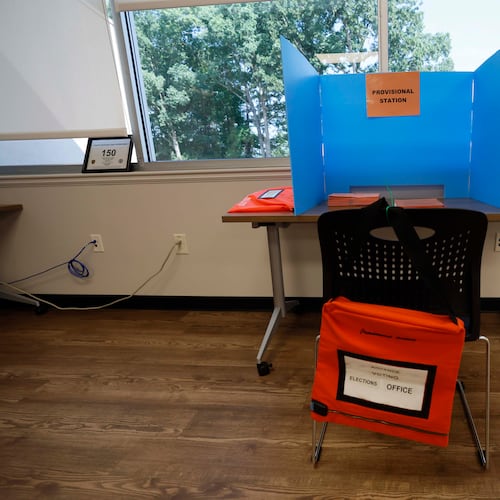Fulton County residents want transit. And they want a lot of transit — more, in fact, than the county can reasonably pay for, officials say.
So on Thursday, county leaders met to talk through what local governments might be able to build.
“The public is asking us to do something,” Fulton County Commissioner Liz Hausmann said. “It’s a sea change, really, from what it was before.”
The county's transit master plan, created after about a year of discussion and study, calls for MARTA extensions, including up Ga. 400 from the North Springs station to Holcomb Bridge Road, from the Hamilton Holmes MARTA station west along I-20 and from Hapeville to Clayton County.
It also calls for light rail on the top end of I-285, bus rapid transit lines in the north and south of the county and arterial rapid transit lines that would allow more connections between stations.
All told, though, it would cost $16 billion and several decades to execute that plan. That’s far more money than Fulton County has to pay for transit.
So Kimley-Horn representative Eric Bosman, who led the study, gave government officials options. A quarter penny sales tax would bring in $2.4 billion over 40 years and allow for three bus rapid transit lines. A half-penny tax could pay for the northern MARTA extension and some bus rapid transit, but wouldn’t cover the cost of making connections outside those main lines.
Leaders quickly zeroed in on an option that would allow increased connectivity while laying the groundwork for more expansion in the years to come. The proposal they coalesced around calls for a mix of bus rapid transit and arterial rapid transit in both the northern and southern parts of the county.
“I think there’s only one intelligent choice,” Roswell Mayor Jere Wood said. “Every year, the problem gets worse, and our support grows.”
Bus rapid transit, which use managed or dedicated lanes and has riders board at stations, not bus stops, has been gaining interest in metro Atlanta. The proposed lines would run up Ga. 400 to Old Milton Parkway, and along Holcomb Bridge Road to the north. In the south, they would run along South Fulton Parkway to Ga. 92 and along U.S. 29.
The arterial rapid transit option also has riders board at stations, but the vehicles would be mixed in with all traffic. They would have lanes at major intersections that would allow them to bypass traffic and would have technology that allows them to turn traffic lights green when they were approaching. Those lines are proposed on Roswell Road, Old Milton Parkway, Ga. 141, Fulton Industrial Boulevard and Camp Creek Parkway.
Those projects would cost about $4.9 billion and could be funded with a half-penny sales tax over 40 years.
If state or other funding becomes available, the lines could be extended, and light or heavy rail might be back in the conversation.
For some, that’s not enough. Bill Edwards, the mayor of the new city of Renaissance, said he’d like to see light rail in south Fulton, which he thinks could spur economic development. But if both north and south are getting bus rapid transit, at least they’re being treated equally, he said.
Vince Williams, the Union City mayor, said he doesn’t think 40 years is long enough. Why not fund transit in perpetuity, he asked, so there is always money for upkeep and expansion?
Even with the questions, though, leaders were excited about the possibility of increased options. They plan to hold public hearings in January, in north and south Fulton, to present the various proposals to ensure that residents agree with their assessments.
They’ll also begin conversations with lawmakers, who would need to write legislation to allow the county to take any transit tax to voters.
Fulton could begin collecting a quarter penny in 2019, but could not collect a half penny until 2022, because it already has a 7.75 percent tax rate, and the state caps its rate at 8 percent. A three-quarter penny transportation sales tax that was passed last year expires after five years.
Bob Ellis, the Fulton County vice chairman, said it would be “a gross failure” if the county didn’t work with the state to plan bus rapid transit stops as the Georgia Department of Transportation builds managed lanes in the county. He said it would be a missed opportunity if the county did not move forward, quickly, with its transit options.
The fact that there are options is “fantastic,” said Chris Owens, the mayor pro tem of Alpharetta.
“I don’t like the idea of taxing, but sometimes you have to,” Owens said. “I look at this as an investment, rather than an expense.”
“We’re still providing services county wide,” she said. “Our countywide footprint doesn’t change when incorporation happens.”
MYAJC.COM: REAL JOURNALISM. REAL LOCAL IMPACT.
The AJC's Arielle Kass keeps you updated on the latest happenings in Fulton County government and politics. You'll find more on myAJC.com, including these stories:
Never miss a minute of what's happening in Fulton politics. Subscribe to myAJC.com.
About the Author
Keep Reading
The Latest
Featured




